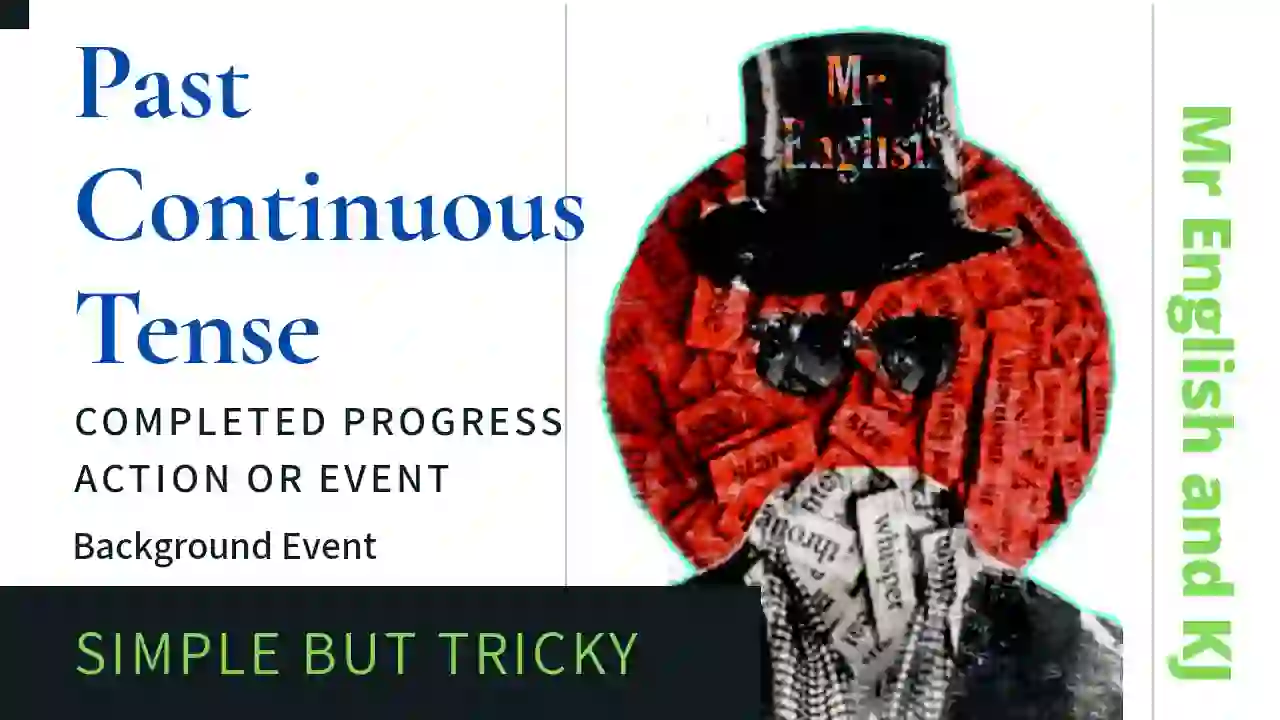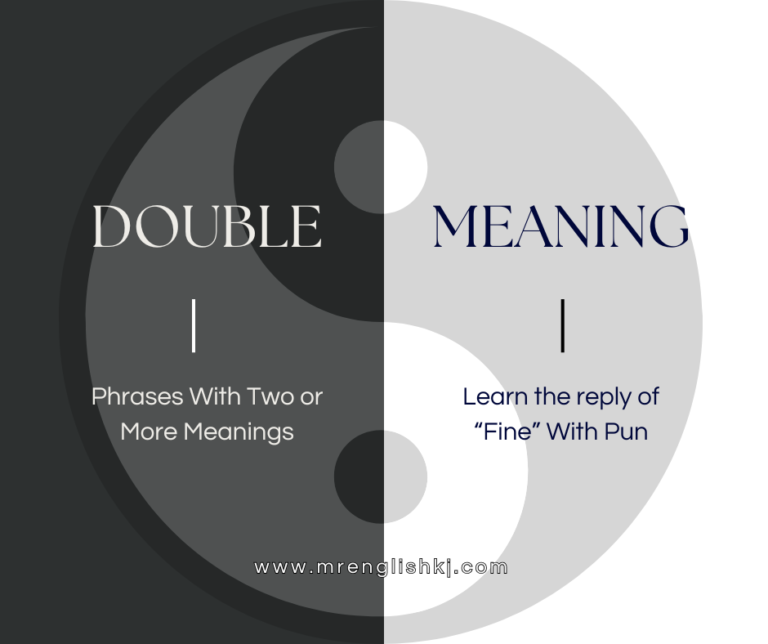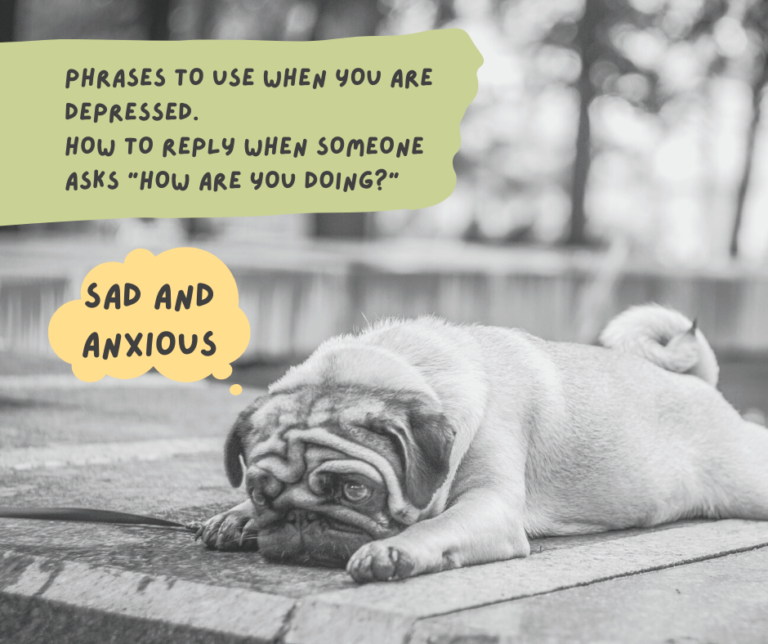
Master The Past Continuous Tense Easily with Clear Rules, Simple Examples & Smart Tip
The Past Continuous Tense (also called Past Progressive) shows an action that was in progress at a specific time in the past but ‘the progress has finished.’ It expresses ongoing past actions, interrupted events, background situations, and temporary activities.
This complete guide gives you simple rules, formats, daily-use examples, real-life sentences, and easy explanations so you understand Past Continuous Tense like a pro.
Table of Content
- What Is Past Continuous Tense? (Simple and Full Definition)
- Uses of Past Continuous Tense (With Real Examples)
- Frequently Asked Questions: Most Important
- Practice and Prepare for Past Continuous Tense: Quick Tests for Strong English Understanding
What Is Past Continuous Tense? (Simple and Full Definition)
The Past Continuous Tense describes an action or event that was happening for some time in the past but is now finished.
KJ – What is the definition of Past Continuous?
Mr English – The definition is based on its name Past Continuous. A time which is finished.
KJ – Wrong! The definition is based on its name Past Continuous. A time that is past (old, changed, or completed) and continuous (progress). Past Continuous means old, changed, or completed progress.
KJ – Understood? TAKE A LOOK BELOW TO UNDERSTAND IT CLEARLY!
Past Continuous = Past (old / completed) + Continuous (progress / ongoing)
We use it for old, changed, and completed action or event. It tells us:
- What was happening at a past time
- What was interrupted in the past
- What was going on in the background
- What temporary action was occurring
Simple Definition: Past Continuous means a finished progress in the past.
Structure & Rules of Past Continuous Tense
- Was + verb 1st form + ing = I, he, she, it, this, that, there, here, singular noun, etc.
- Were + verb 1st form + ing = We, you, they, these, those, there, here, plural nouns, etc.
Sentence Formats
- Affirmative (Positive Sentence) = Subject + was/were + verb 1st form-ing + other words.
- She was reading a book.
- Negative = Subject + was/were + not + verb 1st form-ing + other words.
- They were not playing football.
- Simple Interro (Yes-No Question) = Was/were + subject + verb 1st form-ing + other words?
- Were you studying last night?
- Simple Interro Negative = Was/were + subject + not + verb 1st form-ing + other words?
- Was she not working yesterday?
- Interrogative (WH-Question) = Wh-family + was/were + subject + verb 1st form-ing + other words?
- Why were you running?
- Interrogative Negative = Wh-family + was/were + subject + not + verb 1st form + ing + other words?
- Why were you not running?
Uses of Past Continuous Tense (With Real Examples)
Finished Progress Around a Time in the Past
Any action, event, or state that was in progress but finished around a time in the past. It is slightly similar to Present Continuous, “Progress around a time,” but here, the progress was finished already. We use it when the exact time is not mentioned.
“Around a time” means there is no exact time, so we use Past Continuous.
Examples:
- She was enjoying the party.
- (Finished progress around time in past – was enjoying, the progress has finished. There is no exact time mention.)
- We were dancing around the party.
- (Finished progress around time in past – were dancing, the progress has finished. There is no exact time mention.)
- I was going back home.
- (Finished progress around time in past – was going, the progress has finished. There is no exact time mention.)
- What were you doing?
- (Ask for finished progress around time in past – were doing, ask for the finished progress. There is no exact time mention.)
- Why was he going to the office?
- (Ask for finished progress around time in past – were going, ask for the finished progress. There is no exact time mention.)
Finished Progress At a Particular Time in the Past
Any action, event, or state that was in progress but finished at a particular time in the past. It is slightly similar to Present Continuous, “Progress at a time,” but here, the progress was finished already. We denote the progress is over or finished at a particular time in the past.
“At a time” means there is a definite time in a sentence, so we use Past Continuous.
Examples:
- She was enjoying the party all night.
- (Finished progress at a time in the past – was enjoying, the progress has finished. There is a definite time mentioned which is “all night.”)
- We were prancing around the ceremony yesterday.
- (Finished progress at a time in the past – were dancing, the progress has finished. There is a definite time mentioned which is “yesterday.”)
- I was going back home last Monday.
- (Finished progress at a time in the past – was going, the progress has finished. There is a definite time mentioned which is “last Monday.”)
- What were you doing all day?
- (Ask for finished progress at a time in the past – were doing, ask for the finished progress. There is a definite time mentioned which is “all day.”)
- Why was he still eating after lunch?
- (Ask for finished progress at a time in the past – was eating, ask for the finished progress. There is a definite time mentioned which is “after lunch.”)
Reason or Context of a Past Event
We often use Past Continuous to give reason and context behind the event in the past. It denotes the reason for doing or not doing something. It is to explain the reason behind another past action.
Examples:
- Sam didn’t attend the meeting last week; he was traveling to Asia.
- (The reason for not attending the meeting was traveling to Asia. The reason is in Past Continuous.)
- They were feeling sick, so they took a half-day from the office.
- (The reason for taking a half-day was feeling sick. The reason is in Past Continuous.)
- He had to pay the restaurant bill as his friends were not carrying wallets.
- (The reason for paying the bill was his friends who were not carrying wallets. The reason is in Past Continuous.)
Background Event (For Less Important Action: Behind The Scene)
When one action or event is more important than another action or event in the past, we use Past Continuous. An event that was happening / running behind the main event or an event that is less important than the main event is called background event. We always use Past Verb for the main event.
We often use the Past Continuous to show a result of the “Main Event.” Both “Past Continuous” and “Past Tense” denote completed events.
Note –
Background Event = Past Continuous.
Main Event = Past Tense [Simple Past, Past Simple, Past Perfect, or Any Past Verb.]

What are the reasons behind a Background Event: Interrupted Action, Repeated Action, Irritated Action, and Less Important Action.
A. Interrupted Action or Event
When a progressive background action or event has been interrupted or finished because of the main event, we call it Interrupted Action or Event. A long action was interrupted by a short action.
Focus On: The Green color sentence is Main Event. The Red sentence is Background Event.
Examples:
- She was riding a bicycle to school when she saw the accident.
- (The progress of riding a bicycle stopped because of looking the accident.)
- We were dancing around the party while the electricity was gone.
- (The progress of dancing stopped because of the electricity cut-off.)
- As I was taking care of him, he recovered from illness.
- (The progress of taking care stopped because of recovering from illness.)
- When you called me, I was eating my dinner.
- (The progress of eating dinner stopped because of a call.) (Having = eating. You can use “having” in place of “eating” too.)
- The microphone had been turned off as I was giving the speech.
- (The progress of giving the speech stopped because of the turned-off microphone.)
B. Repeated Past Action
A repeated progress that continued until another action ended it.
Examples:
- I was giving speeches all the time until my throat got sore.
- (The repeated progress of giving speeches ended because of sore throat.)
- Until I was sick; I was training four days a week.
- (The repeated progress of training ended because of sickness.)
- She was always coming late to office; I started to give her a ride.
- (The repeated progress of coming late ended after getting a ride.)
- We were dancing in the bar every Saturday, then one morning; the bar shut down.
- (The repeated progress of dancing ended because of permanently closed bar.)
- I was feeding their dog three times a day till they were back from vacation.
- (The repeated progress of feeding the dog ended after a return from vacation.)
C. Irritated Past Action
A repeated or interrupted action that caused irritation. It is not necessary that the repeated action stops, sometimes you feel angry for stopping your progress or your progress causes you irritation is also part of Past Continuous Tense.
Examples:
- I changed my diet, I was eating only one time in a day.
- (Irritated because of eating once a day then the progress finished after changing diet.)
- Someone switched the channel when I was watching a serial.
- (Interrupted progress because of the channel changed caused irritation.)
- We were happily celebrating her birthday until there was an argument.
- (Interrupted progress because of an argument caused irritation.)
D. Less Important Background Action
When any background action or event is not important even if we skip it from sentence, it does not affect the main event and it remains meaningful. This definition is just to show you that background is always background, it is not important comparing to the Main action or event. A main can survive without background.
Examples:
- I didn’t attend the meeting last week, I was traveling to London.
- (“I was travelling to London” is a complete sentence of its own.)
- She was driving her car to school when she saw the accident.
- (“She saw the accident” is meaningful without background sentence.)
- She was enjoying the party when I called her.
- (Even though it shows an interruption. Our main purpose of this definition is to show the importance between Main and background.
- “I called her” is a complete sentence of its own. It doesn’t need background
- but “She was enjoying the party” requires more information like what happened next
- or it raises a question ‘Why are you just telling me this?’ Tell me more,
- so a background always need a Main sentence to complete it.)
Parallel Actions (Two Actions at the Same Time)
When two or more different actions or events were happening at the same time, we call it Parallel Action. We use Past Continuous in both sentences if both actions were progressing together in the past.
Examples: (Both actions progressed at the same time in Past.)
- I was feeding the dog when it was barking.
- I was driving while he was looking outside the window.
- As he was paying the bill, she was negotiating.
Temporary Past Actions
When any action or event is not permanent, is not your routine, or you are not doing it regularly is Temporary Action. “A finished progress that happens sometimes which is not certain WHEN?“
Examples:
- Last Sunday, I was going on a tour.
- (Temporary progress – you do not go to tour regularly.)
- Sia was learning English.
- (Temporary progress – Sia does not learn English all the time.)
Frequently Asked Questions: Most Important
What is the easiest way to understand Past Continuous?
It shows an action in progress in the past that later finished.
Is Past Continuous and Past Progressive the same?
Yes. Both are the same tense.
How to identify where to use Past Continuous easily?
You should not forget the rule “Was / Were + Verb-ing” to identify and also these words help you to understand when and where to use Past Continuous Tense: while, when, as, all day, all night, yesterday, at that moment, etc.
Can Past Continuous show reason?
Yes. For Example: He missed school because he was feeling sick.
Can two Past Continuous actions happen together?
Yes and we mostly use “While” for it. For Example: She was cooking while I was cleaning.
How do I master Past Continuous Tense?
You should follow these steps:
1. Read the whole article on Past Tense.
2. Go through all examples and use them in real life.
3. Try to take all the English tests available.
4. Try to practice by making sentences yourself and reply in comment section. We will correct your mistakes and improve your skills.
Practice and Prepare for Past Continuous Tense: Quick Tests for Strong English Understanding
Beginner Friendly Exercise With Four Options Each
Practice the tense with these interactive quizzes: It has a balanced touch of basic to advanced questions. [The content will be here soon.]
- One: Exercise 1
- Two: Exercise 2
- Three: Exercise 3
- Four: Exercise 4
- Five: Exercise 5
- Six: Exercise 6
- Seven: Exercise 7
- Eight: Exercise 8
- Nine: Exercise 9
- Ten: Exercise 10
Fill In The Blanks Quiz: Learn English With Paragraphs
Slightly more difficult then above quiz, there you will fill the blanks in the paragraphs.
- One: Paragraph Exercise 1
- Two: Paragraph Exercise 2 [The content will be here soon.]
Story Time: Learn and Improve English With Story Tests
The most useful exercises in English, you will learn English by filling interesting story gaps. You will improve not only you English but also vocabulary. [The content will be here soon.]
Advice – Never learn any language using another language. You should learn English in English, not in your native language (mother-tongue). Just like you learned your mother tongue in your own mother tongue. By learning in this way, only makes your English accurate, fluent, and you learn it like a Pro.
Practice in Comment Section: I assure our Team will correct your grammatical mistakes there.


